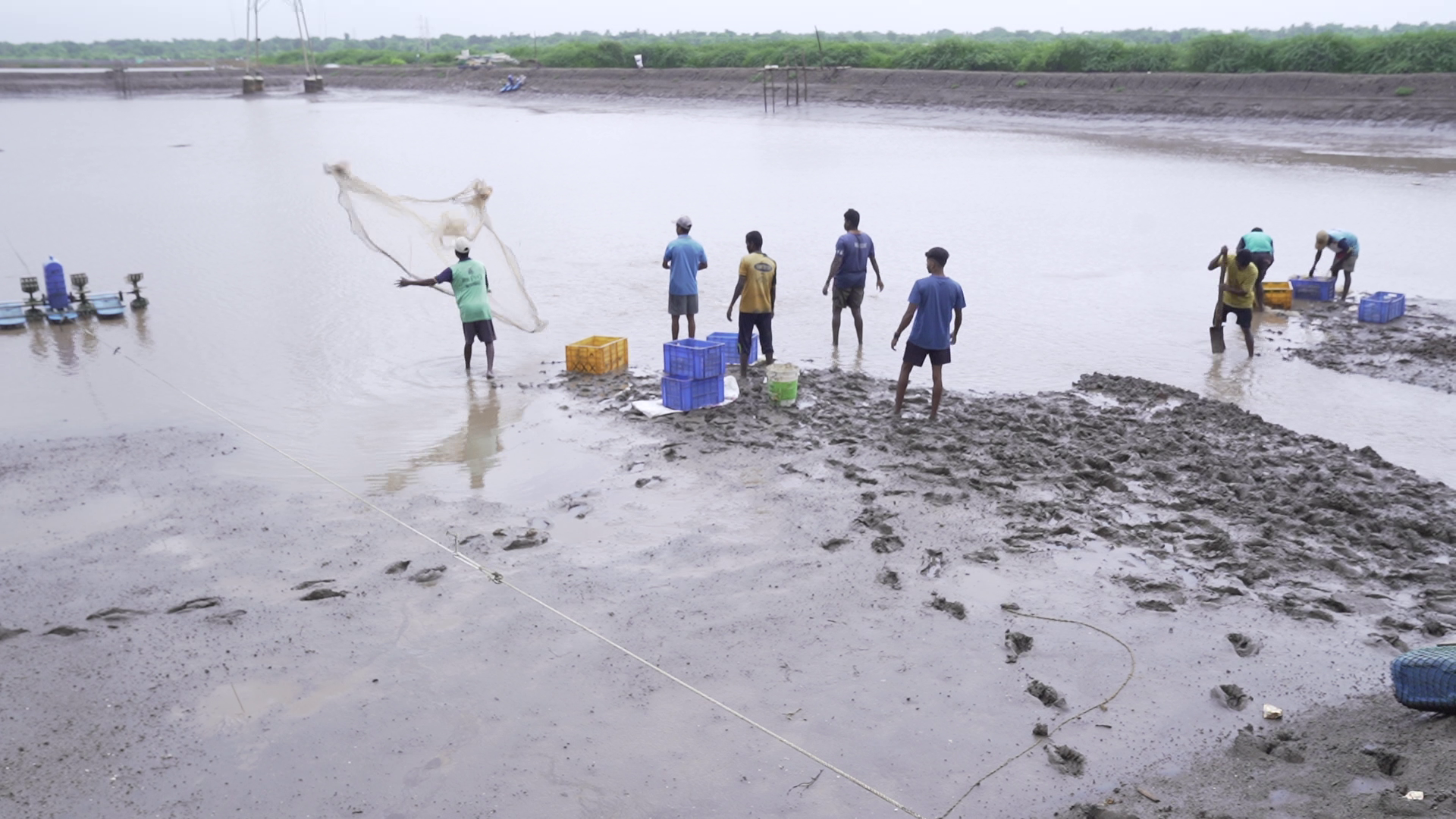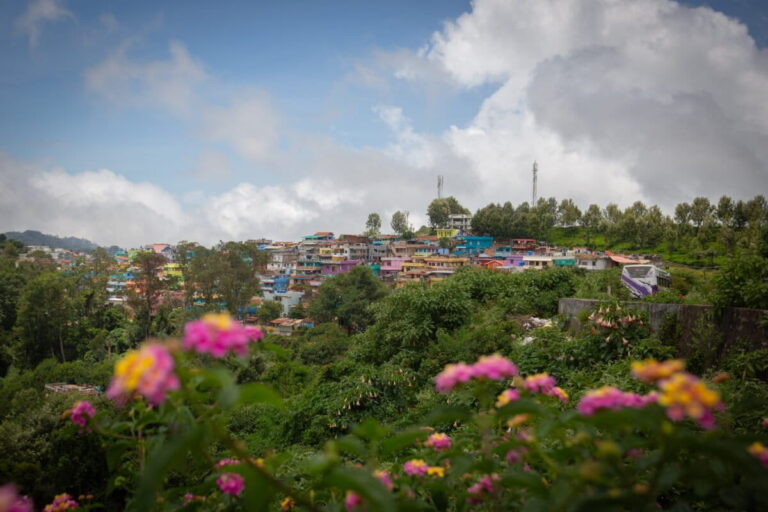- The Coastal Aquaculture Amendment Act 2023 decriminalises violation of certain regulations by aquaculture farms. This would encourage further violations, artisan fishers fear.
- Shrimp has emerged as one of India’s major foreign exchange earners from among the agriculture sector, but it has also been blamed for increasing ground and surface water salinity, sea water pollution and usurping of common land.
- Shrimp aquaculture farms have frequently faced allegations of destroying the environment and hauled up by green tribunals, but the new law’s retrospective effect would regularise past violations, fishers’ organisations allege.
“Trawling-Project Bhai Bhai, Ek dori-te fansi chai”
(Trawling and shrimp culture are brothers and both need to be hanged with the same rope)
The Bengali couplet has been a popular protest slogan since the 1990s among small and marginal fishers of East Midnapore district in West Bengal, the word ‘project’ referring to shrimp/prawn aquaculture farms. Now, the fishers feel the government has dealt them a final blow, with the passing of the Coastal Aquaculture Authority Amendment Act, 2023.
“The fishers of coastal West Bengal have been demanding the end of shrimp aquaculture. We have been organising protests and submitting deputations with the administration against rampant violations of regulations. Now, the new law has not only regularised all illegal shrimp farms but has taken away the legal provisions to act against them,” said Debasis Shyamal, president of Dakshinbanga Matsyajibi Forum, an organisation of artisanal fishers.

The Amendment Act was passed by the parliament in the second week of August. It declared coastal aquaculture as “permitted activity under the Coastal Regulation Zone Notification… issued under the Environment (Protection) Act, 1986,” decriminalised violations of coastal zone management regulations by aquaculture activities, and also provided for regularisation of all unauthorised aquaculture farms by making the Act retrospectively effective from December 16, 2005.
“The might of the shrimp aquaculture industry had already cornered small scale fishers,” said Shyamal. “We feel really frustrated and hopeless.”
A history of policy dilution for aquaculture
Concerns over unregulated coastal aquaculture, primarily shrimp, is not new. Artisanal fishers across India have protested it for years, from the Chilika lake region in Odisha in the 1990s to the recent agitations in Tamil Nadu.
Even though the government claims that the Amendment Act “enables lakhs of small marginal aquaculture farmers to avoid possible need for obtaining CRZ clearances from multiple agencies,” organisations of small and marginal farmers feel otherwise.
“It is one of the most grotesque onslaughts by the united force of political power and capital on the coastal environment as well as on the livelihoods of millions of small-scale fish workers and farmers,” alleged Pradip Chatterjee, national convener of National Platform for Small Scale Fish Workers (NPSSFW).
“Across India’s coastline, small and marginal fishers are nearly absent in shrimp aquaculture. It is the moneyed and land-owning sections of the society who are involved in it,” he said. “Shrimp earns the government foreign exchange and that’s why the interests of the small-scale fishers have been sacrificed.”

A research paper published earlier this year made similar observations. It said that “aquaculture farmers are relatively influential in political and economic capital” and that the growth of shrimp farms in the region resulted in a decline in area under paddy cultivation, pollution of fishing grounds and contamination of drinking water.
“Our findings suggest the need for policymakers to take a more critical look at brackish water aquaculture and the possible irreversible costs that they might have on coastal lands and rural livelihoods,” the paper said.
According to Chatterjee, nearly 10 million small and marginal fishers are directly engaged in marine fishing and nearly the same number of people have secondary engagement. The government’s Handbook on Fisheries Statistics: 2022, however, put the number of marine fishers at about five million, which Chatterjee claims to be underreporting.
Leaders of different small and marginal fishworkers’ associations in India alleged that the supreme court’s 1996 judgment, which disallowed the setting up of shrimp culture farms in areas prohibited under the Coastal Regulation Zone (CRZ) notification of 1991, was diluted by the Coastal Aquaculture Authority Act of 2005, whose provisions were subsequently further diluted by the Coastal Regulation Zone (CRZ) notifications of 2011 and 2019 and their amendments.

“The planned destruction of coastal artisanal fishery by pushing shrimp aquaculture harder and harder has come full circle now,” said R.V. Kumaravelu of the National Fishworkers’ Forum based in Nagapattinam, Tamil Nadu.
According to him, the districts of Nagapattinam and Mayiladuthurai have at least 1,890 shrimp farms, about half of which function in violation of existing regulations. Such practice will now become more widespread as the government has removed the option for criminal proceedings, he apprehends.
The amendment removed imprisonment for a period of up to three years and imposed, in the government’s words, “only a penalty in line with principle of decriminalising civil transgression.”
Old concerns growing bigger
This decriminalisation of aquaculture activities happened less than a year following a report by the Comptroller and Auditor General of India, which highlighted that “competing demand for land for agriculture and prawn farming” were threatening the mangroves along the coast of Odisha, the illegal effluent discharge from aquaculture farms in Andhra Pradesh were polluting the Coringa Wildlife Sanctuary (CWLS), and coastal aquaculture units in Guntur district of Andhra Pradesh were found in violation.
It also pointed out that the National Coastal Zone Management Authority (NCZMA), the apex agency for coastal regulation, “was effectively not involved in monitoring and discussion of action on CRZ violations, which was one of the responsibilities assigned to it.”
NCZMA did not supervise the activities of the state units (SCZMA) regarding monitoring and follow up of violations, it noted, and warned that the “lack of monitoring and enforcement actions would result in providing ineffective deterrence for the destruction of coastal ecology.”

After passing the Amendment Act, the government declares that its intention is “to promote ease of doing business in coastal aquaculture by fine-tuning some of the operational procedures of Coastal Aquaculture Authority.” It hopes the sector is now “poised to take (the) next big leap in form of diversification of species and area expansion.”
Coastal aquaculture, particularly shrimp farming, is the most vibrant food producing sector in India, earning high foreign exchange. According to India’s Marine Products Export Development Authority (MPEDA), frozen shrimp is the largest exported item, both in terms of quantity and value during the last decade. India exported 6.52 lakh MT (metric ton) of frozen shrimp worth $ 4,889.12 million during 2019-20 and it constituted 50.58% in quantity and 73.21% in terms of total USD earnings from sea food export.
About 1.2 million families are estimated to be dependent on this sector directly and indirectly. Altogether, 39,705 shrimp farms with total farm area of 61,044.89 hectares (water spread area of 41,624.70 hectares) were registered with the government till May 2020.
However, a 2018 paper pointed out that “the variation between the actual area under shrimp aquaculture and the Coastal Aquaculture Authority approved area indicates that the larger extent of shrimp farm operates without approval.”
Impact on artisanal fishers
While the shrimp farming industry has wholeheartedly welcomed the new legislation and thanked the government, artisanal fishers have been left a worried lot.
According to Debashis Paul of the Andhra Pradesh-based Democratic Traditional Fisher’s and Fish Workers Forum (DTFWF), shrimp farms grab common land used by artisanal fishers, decrease fish production by polluting sea, river and creek waters with the discharge of untreated effluents, and increase salinity in ground and surface water in their vicinity.
He pointed out that while some recent orders by the National Green Tribunal (NGT) gave them some hope, the new legislation has nullified all such court or tribunal orders for destroying illegal farms.
“No enforcement shall be made by any court of any decree or order or direction relating to removal or closure of any coastal aquaculture activity or demolition of any structure connected therewith… as if the provisions of sub-section (1), and the amendments made in sub-section (8) of section 13 had been in force at all material times,” says the Act.

This amendment is crucial because in a September 29, 2022 order the NGT held that the CAA Act made any activity without registration a punishable offence and that the sub-section 8 of its Section 13 “prohibits aquaculture within 200 m. from HTL and in creeks, rivers and backwaters within the CRZ area.” It is based on this interpretation of the section that the NGT decided that hatcheries “cannot be allowed to be located” within 200 metres from the High Tide Line (HTL) or in Coastal Regulation Zone (CRZ)-I areas. They can be located beyond 200 m. in CRZ-III areas “with prior permission.”
“Any hatchery within 200 m. of HTL which is ‘No Development Zone’ or in CRZ-I areas would be illegal and to be demolished immediately,” the NGT ruled in the context of Tamil Nadu, asking the CAA to initiate prosecution against them and assess the compensation to be imposed on them as per past violations.
Now, the amended Act has categorically clarified that such past orders are invalidated.
Banner image: A fisherman casting a net in Kerala, India. Photo by Challiyil Eswaramangalath Vipin/Wikimedia Commons














